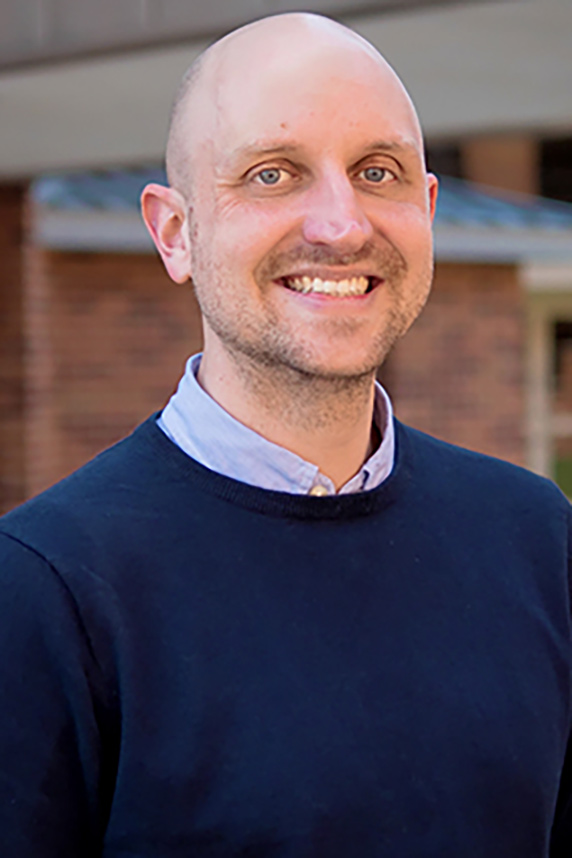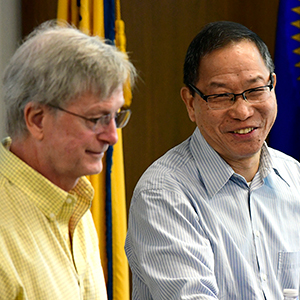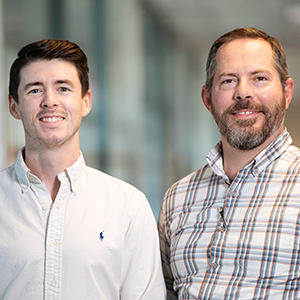
In recognition of Breast Cancer Awareness Month, I want to take a moment to celebrate the groundbreaking work by NIEHS scientists and grantees to shed light on this disease.
For example, this year marks the 20th anniversary of the Sister Study, a major effort by institute researchers to uncover the environmental and genetic influences on breast cancer. Air pollution, sleeping with artificial light at night, and childhood trauma are just a few examples of factors that our scientists have associated with increased risk. New findings continue to emerge from this landmark study, which includes more than 50,000 sisters of women who have had breast cancer. (Learn more by reading the feature story in this month’s issue of Environmental Factor.)
NIEHS grantees also conduct outstanding breast cancer research. These individuals address critical questions about how exposure to toxicants may increase susceptibility to the disease. One such scientist is Justin Colacino, Ph.D., from the University of Michigan. He aims to better understand disparities related to breast cancer, such as the fact that Black women are particularly vulnerable to an aggressive form of the disease called triple-negative breast cancer.
Recently, I spoke with Dr. Colacino to learn more about racial disparities in breast cancer, environmental and biological factors that predispose women to develop the disease, and what sparked his interest in this area of science. Excerpts of our interview are provided below.
Breast cancer disparities

Rick Woychik: What should people know about breast cancer disparities?
Justin Colacino: Breast cancer disparities represent one of the most pressing and complex issues in public health. We know that non-Hispanic Black women are 40% more likely to die after a breast cancer diagnosis than their non-Hispanic White counterparts. Also, non-Hispanic Black women are three times more likely than those same counterparts to be diagnosed with the most aggressive subtype of breast cancer, which is called triple-negative breast cancer. Further, we have seen population-based data from the Centers for Disease Control and Prevention showing that Black women are three to four more times likely to die even after an early-stage diagnosis.
Identifying potential contributors
RW: What environmental variables are contributing to these disparities?
JC: Some research suggests that the social environment is important. For example, there is evidence that Black women born in a Jim Crow state prior to the civil rights era were at increased odds of developing receptor-negative breast cancer compared to Black women not born in a Jim Crow state.
There is evidence that social stress and structural racism play a role in breast cancer disparities. And when we think about breast cancer outcomes, we have to talk about the problem of unequal access to care in some localities as a major driver of disparities. Others have suggested that lack of access to healthy foods and safe neighborhood environments contributes, too.
But this issue is complex, and there are many important risk factors. My team at Michigan has worked to more closely examine chemical exposures linked to breast cancer. We have adopted an approach that we call epidemiologically informed toxicology, where we take human population data and then use that information to design our experiments in the lab.
Prioritizing chemicals for further testing
RW: Very interesting. What have you discovered so far?
JC: We have been able to leverage the National Health and Nutrition Examination Survey, which is an amazing study that has captured a massive amount of helpful data on diet and environmental chemical levels measured in the urine and blood of study participants. An incredible bioinformatician on our team has collated all of this data so that we can try to assess whether chemical exposures might vary across different demographic groups, and whether there are strong associations between exposure levels and breast cancer outcomes.
For many chemicals, exposure levels are strikingly higher in non-Hispanic Black women, such as compounds in household cleaners and personal care products, which reflects this concept that others have termed “the environmental injustice of beauty.” Some hair straighteners and dyes found in beauty products used mostly by non-Hispanic Black women are linked to aggressive breast cancer. In addition, we see that exposure to heavy metals such as lead, arsenic, and mercury, as well as to some persistent organic pollutants, tends to be higher in non-Hispanic Black women, on average.
With all of this data, our next step is to prioritize chemicals for further testing in the lab. We are screening these chemicals to assess their bioactivity and test whether it is plausible that the high exposure levels we see in the population are in fact predisposing women to breast cancer.
Cellular disruption
RW: Why is triple-negative breast cancer especially problematic?
JC: Breast cancer subtypes are often defined by whether they express a certain kind of receptor. For example, one subtype is called estrogen receptor-positive breast cancer, and another is known as human epidermal growth factor receptor 2-positive cancer. However, triple-negative breast cancers do not express any of these receptors, which means that there are no drug treatments that can target them to slow or stop the growth of tumors.
An additional layer of complexity is that triple-negative breast cancers appear to be driven by reactivation of cellular pathways that we normally associate with stem cells. Our team and others have done fascinating molecular profiling, even down to the single cell level, and a common characteristic that we see in aggressive breast cancers is reactivation of an embryonic stem cell state. That means these cells’ genes are being turned on at the wrong place and the wrong time.
Also, we have discovered that there are more cellular populations in the breast than we initially anticipated, and there are specific cell populations that have lost their identity in one way or another. They are what we would consider to be hybrid cells because they share characteristics of two cell populations at the same time. If you look carefully at these hybrid cells, they look like aggressive breast cancer cells. Ultimately, our lab is trying to better understand how environmental factors may be driving these cellular states.
Research to inform prevention efforts
RW: That is fascinating. Any closing thoughts for Environmental Factor readers?
JC: I would be remiss if I did not mention the critical role of prevention. The biological complexity I just described and the significant heterogeneity that we see across tumor cells in triple-negative breast cancers mean that it will be quite difficult to develop a drug that can target every cell in that diverse cell population. So, in my view, the best thing to do at the individual level is to avoid environmental exposures that may pave the way for breast cancer. Identifying the environmental drivers of these aggressive cancers is going to be how we move the needle on breast cancer disparities, and that is the focus of my lab.
One helpful framework for us is known as developmental origins of health and disease. Development is a critical window of susceptibility because in that early period, there is a lot of epigenetic reprogramming happening. [Epigenetics refers to modifications on DNA or the proteins associated with DNA that affect how genes are turned on and off.] These epigenetic changes may be driving the biological changes that are associated with environmental exposures.
There is a lot of toxicological data that supports this hypothesis, but it is not something that the scientific community has been able to study very effectively in people, and we want to change that. We are trying to develop the ability to, for example, take a blood sample and then look backwards and kind of predict somebody’s early-life exposures. That kind of knowledge could then be used to help strengthen breast cancer prevention efforts at the individual level.
Also, we want to assess what exposures may be causing expansion of those diverse cell populations I mentioned. We are using a variety of cutting-edge tools to quantify the specific expansion of these cell populations. This work is in its infancy, but I think it is a promising area of research.
(Rick Woychik, Ph.D., directs NIEHS and the National Toxicology Program.)









